Hey! Hoary alyssum can be fatal for horses
About 50 percent of horses appear to be susceptible to this toxin, which, in its dried form, bears a striking resemblance to alfalfa. Heres what you need to know to help horse owners prevent fatalities.
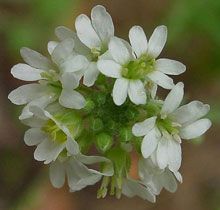
Photos of Hoary Alyssum courtesy of Washington State Noxious Weed Control BoardHoary alyssum (Berteroa incana) is a toxic weed that grows throughout most of the United States, except for California, Arizona and the southeastern states. It has adapted exceptionally well to the cooler winters and hotter, drier summers of the northern states and Canada.1-3 Part of the mustard family (Brassicaceae), hoary alyssum is also known as false alyssum, false hairy madwort, healbite or heal bite, hoary berteroa and hoary false alyssum. A few states, such as Montana, have designated hoary alyssum as a noxious weed, which means that it has the ability to injure crops, livestock, wildlife or people.
The toxin in hoary alyssum is unknown. What is known, based on years of observation and little scientific research, is that horses are the species affected by the toxin. No case reports or even clinical signs of hoary alyssum poisoning exist for ruminants, including cattle, sheep and goats. Recent reports of equine deaths in Washington state, however, have once again put hoary alyssum poisoning foremost in the minds of many horse owners and producers.
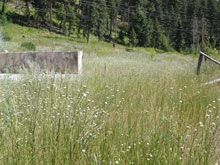
Hot and dry: Hoary conditions
Hoary alyssum prefers hot, dry conditions and grows well from early spring to late fall in ditches, railroad beds, trails and other areas with sandy to rocky soil. It is also found in pastures, meadows and rangeland and is a known contaminant of hay fields. Direct sunlight is preferred, although growth occurs in shady areas as well. Typically, large stands of hoary alyssum occur during or following a drought year or pasture or rangeland winterkill.1 Hoary alyssum reproduces and spreads rapidly by seeds, and it has been estimated that one plant alone can produce 2,500 seeds a year. People and animals, farm equipment and environmental factors such as wind and rainwater runoff rapidly spread hoary alyssum seeds.
Hoary alyssum is poisonous in fresh or dried hay, reportedly retaining toxicity for up to nine months. Most toxicologists and field extension agents believe that hay must contain at least 30 percent hoary alyssum before it is considered toxic.1,2 Toxicity is not limited to hay, however, as clinical signs occur when the weed is grazed in pastures, meadows or rangelands, especially when they are unimproved or overgrazed and hoary alyssum has been allowed to grow unchecked. The amount of grazed hoary alyssum necessary to cause signs in grazing areas is unknown.

One of the difficulties in understanding the toxicity of hoary alyssum is that not all horses appear to be susceptible to the toxin. About 50 percent of horses eating contaminated hay will develop clinical signs, and the remaining 50 percent eating a similar amount will not.1 There does not seem to be any association between a particular breed, gender or occupation and the development of clinical signs. Toxicosis does seem to occur more often in housed horses such as racehorses and show horses, but this is likely due to stall confinement and feeding of baled hay.3,4
Clinical signs
Clinical signs usually occur within 12 to 24 hours after horses eat enough hoary alyssum to cause toxicosis. The most common signs are “stocking up” or the development of edematous, swollen lower legs and an elevated body temperature (generally greater than 103°F).3,4 The legs are often so swollen, in particular from the knees and hocks down, that people palpating the area leave behind discernible fingermarks or fingerprints (pitting edema) that do not disappear for quite some time. Diarrhea, when it occurs, is generally mild and self-limiting.
If contaminated hay is removed from the diet or animals moved from contaminated pasture or rangeland, recovery generally occurs in one to four days, with only minimal treatment. Most horses respond well to cold-water therapy, support wraps and the judicious use of a nonsteroidal anti-inflammatory drug, such as phenylbutazone, flunixin or firocoxib.4 Left unchecked, however, many horses go on to develop signs of “founder” or laminitis.1,2 When this occurs, hoof walls are warm to hot, digital pulses pounding and the stance not only stiff but often described as “standing on eggshells.” Complete rotation of the coffin bone through the sole of the foot or “sinking” at the coronary band with sloughing of the hoof wall are known sequela. Death from complications of hoary alyssum toxicosis, although rare, has occurred even in those most well-managed cases.
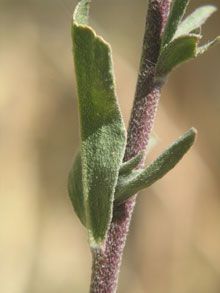
Keep hoary alyssum out
Control of hoary alyssum poisoning depends on identification and removal of the weed. Hoary alyssum in fields and ditches is quite easy to identify, although it is sometimes confused with pennycress (Thlapsi arvense) and false flax (Camelina microcarpa). Typically, hoary alyssum flowers are small (generally less than 0.1 inch across) with four white petals, each of which is notched in the middle to form a “rabbit ear” shape, and the leaves are smooth and without notches.3 Leaves on the flowering stem come from the stem without a stalk or have a very short, almost imperceptible stalk. The plant itself is covered with tiny hairs visible only with a magnifying glass. Identifying the plant in cut and baled hay is generally more difficult, as once hoary alyssum dries it bears a striking resemblance to alfalfa.
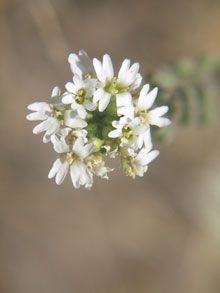
Use these steps to get rid of this noxious weed
Removal of hoary alyssum can be accomplished by many different means. If the stand is small, such as around a house or barn area, pulling by hand or digging out the weed and taproot before flowering is an effective means of removal. Mowing before or at the time of flowering is also effective but generally needs to be repeated several times to keep the weed from producing seeds. A few herbicides labeled for hoary alyssum are commercially available, but grazing restrictions may limit their use, and instructions must be followed carefully.1,4 Herbicide application will need to be repeated during the growing season, as growth and seed production may continue if all the plants are not all killed or new seeds disseminated. Currently, there are no broadleaf herbicides labeled for control of hoary alyssum on grass and legume-mixed pastures that would be effective without killing the legume as well as the weed.4
Pasture and rangeland management play an important role in preventing large stands or growth of hoary alyssum. Pastures and rangelands should not be overgrazed, as the lack of grass and presence of bare soil sets up an ideal situation for hoary alyssum to begin encroaching on the land. Hoary alyssum is unpalatable to most animals, including horses, so remaining grasses are grazed even more, resulting in a vicious circle until hoary alyssum and other weeds dominate the pasture.
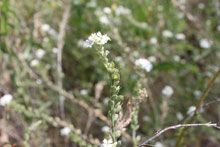
Hoary alyssum, either as fresh or baled hay, should not be fed to horses. And horses on contaminated pastures or rangelands should be moved to hoary-alyssum-free areas. Horse owners and producers should be aware of weeds growing in their pastures or rangelands and be able to accurately identify hoary alyssum so it can be removed-or the horses moved to other areas-before the onset of clinical signs. Most animal owners and producers knowingly feed hoary alyssum contaminated hay to ruminants, although many veterinarians and extension personnel recommend diluting it with a hay not contaminated with hoary alyssum.1 Ruminants fed known contaminated hay should be monitored closely and hay removed at the first sign of any abnormalities.4
Hoary alyssum poisoning in horses is not a newly discovered finding and, in fact, is well known by many older horse owners and veterinarians. Despite this knowledge and a variety of university extension fact sheets, new cases of toxicosis occur each year. Most of them are diagnosed and treated before clinical signs advance to a serious nature. Sadly, a few horses succumb to the toxin's effect despite early and aggressive therapy. Equine veterinarians can help horse owners, especially those new to the industry, learn to identify the weed and take all measures necessary to keep it out of their horse's diet and environment.
References
1. Becker RL, Martin NP, Murphy MJ. Hoary alyssum: Toxicity to horses, forage quality, and control. www.extension.umn.ude'agriculture/horse/health-alyssum. Accessed 12/16/2015.
2. Parkinson H, Mangold J, Jacobs J. Biology, ecology and management of hoary alyssum (Berteroa incana L.). Montana State University Extension. store.msuextension.org/publications/AgandNaturalResources/EB0194.pdf. Accessed 12/8/2015.
3. Martinson K, Murphy, M, Hovda LR, et al. Hoary alyssum. www.extension.umn.edu/agriculture/horse/pasture/hoary-alyssum/. Accessed 12/8/2015.
4. Geor RJ, Becker RL, Kanera EW, et al. Toxicosis in horses after ingestion of hoary alyssum. J Am Vet Med Assoc 1992; 201:62-67
Lynn Hovda is director of veterinary services for the Pet Poison Helpline and SafetyCall International in Bloomington, Minnesota.
Pet Poison Helpline, an animal poison control center based out of Minneapolis, is available 24 hours, seven days a week for pet owners and veterinary professionals that require assistance treating a potentially poisoned pet. The staff provides treatment advice for poisoning cases of all species, including dogs, cats, birds, small mammals, large animals and exotic species. As the most cost-effective option for animal poison control care, Pet Poison Helpline's fee of $49 per incident includes follow-up consultation for the duration of the poison case. Pet Poison Helpline is available in North America by calling 800-213-6680. Additional information can be found online at www.petpoisonhelpline.com.